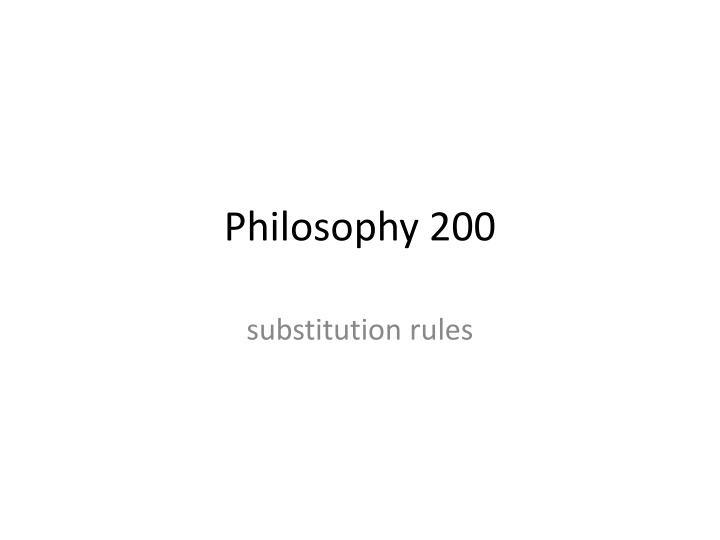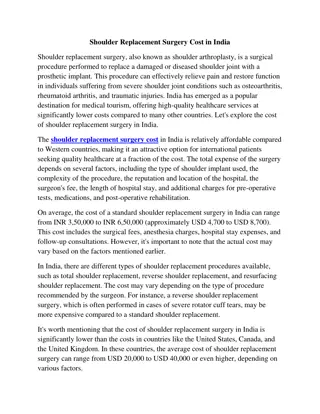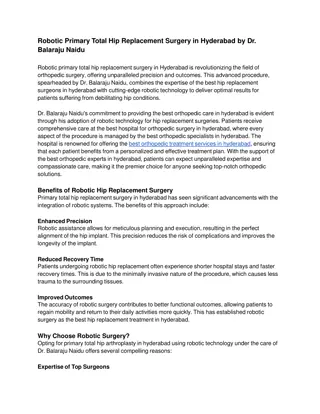
Mastering Substitution Rules in Philosophy 200
Discover how to effectively apply substitution rules in Philosophy 200 to enhance your logical proofs. Explore examples and insights on translating statements from English to symbolic logic, and learn valuable tips for successful reasoning.
Download Presentation

Please find below an Image/Link to download the presentation.
The content on the website is provided AS IS for your information and personal use only. It may not be sold, licensed, or shared on other websites without obtaining consent from the author. If you encounter any issues during the download, it is possible that the publisher has removed the file from their server.
You are allowed to download the files provided on this website for personal or commercial use, subject to the condition that they are used lawfully. All files are the property of their respective owners.
The content on the website is provided AS IS for your information and personal use only. It may not be sold, licensed, or shared on other websites without obtaining consent from the author.
E N D
Presentation Transcript
Philosophy 200 substitution rules
Substitution Sometimes, when you translate a statement from English to SL, you translate it in a form that is less useful to a proof than some other, equivalent form.
Example Biff and Gerald didn t both pass the exam, and Gerald passed, so Biff must not have passed the exam. B = Biff passed the exam G= Gerald passed the exam 1. ~(B G) 2. G C. ~B
Example 1. ~(B G) 2. G prem prem/~B
Example 1. ~(B G) 2. G prem prem/~B What to do? We have no rules to deal with negations, and that s all we have to work with.
Example 1. ~(B G) 2. G prem prem/~B This is where a different translation would have helped us. But you don t really know ahead of time which translation will work in your proof. (unless you use a system with a good enough rule set to handle any given translation )
Example 1. ~(B G) 2. G 3. prem prem/~B So let s replace line 1 with an equivalent statement form.
Example 1. ~(B G) 2. G 3. ~B v ~G prem prem/~B 1, DeM So let s replace line 1 with an equivalent statement form.
Example 1. ~(B G) 2. G 3. ~B v ~G prem prem/~B 1, DeM This is an example of DeMogan s law which proves that the statement forms on 1 and 3 are equivalent. (also that ~(P v Q) is equivalent with ~P ~Q)
Example 1. ~(B G) 2. G 3. ~B v ~G prem prem/~B 1, DeM And now we can straightforwardly conclude the proof.
Example 1. ~(B G) 2. G 3. ~B v ~G 4. ~B QED prem prem/~B 1, DeM 2,3 DS
Important Tip Continue to think of the replacement rules as alternate ways that a statement could have been translated from English into SL.
De Morgans Laws Pip and Quincy don t both speak Klingon. ~(P Q) :: ~P v ~Q Neither Pip nor Quincy speaks Klingon. ~(P v Q) :: ~P ~Q
Association The number in this box could be a five, a six, or an eight. F v (S v E) :: (F v S) v E I wear pants, hats, and shoes P (H S) :: (P H) S
Double Negation Bob doesn t not smoke ~~B :: B
Material Implication If you pay me the protection money, then I ll beat you up. P B :: ~P v B
Exportation If the smurf has plumped up and if it has light grill marks, then it s cooked perfectly. P (G C) :: (P G) C
Commutation Jack and Jill went up the hill. (M F) :: (F M)
Distribution You can get the burger and have mustard or mayo on it. (B Y) v (B D) :: B (Y v D) You can make a deal or you can stand trial and go to jail. (A v B) (A v C) :: A v (B C)
Transposition If you don t study, you won t pass. ~S ~P :: P S
Biconditional Equivalence You are a mother if and only if you are a female parent. (M F) :: (M F) (F M) :: (M F) v (~M ~F)
Tautology There s cheese and then there s cheese C :: C C Am I right or am I right? (rhetorically) R :: R v R






















